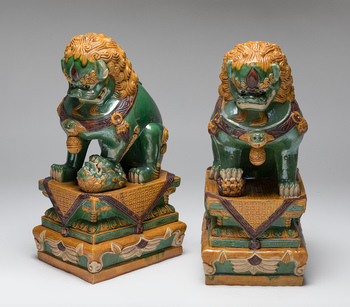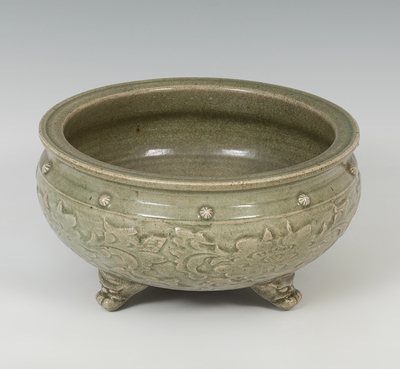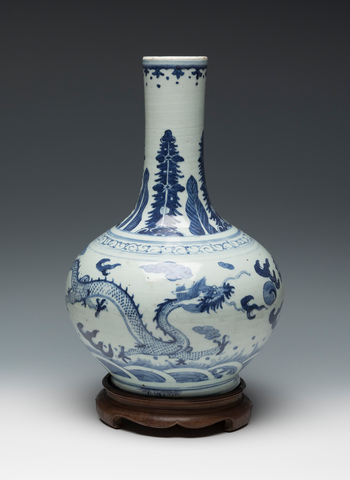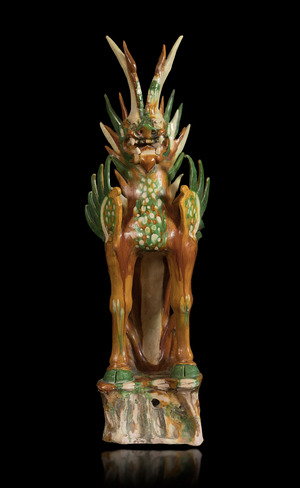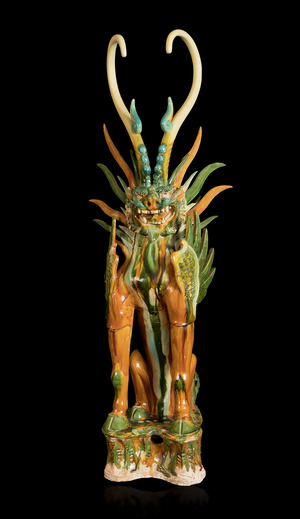04
Collector's guide: 10 tips for buying Chinese ceramics
What new collectors should consider or know about palettes, glazes, reign marks and more…
Touch as many parts as possible
Chinese potters have been copying Chinese pottery for hundreds of years, both out of reverence for an earlier period and to deceive buyers, so beware. There is no faster way to learn than to play as many pieces as possible. Large quantities of Chinese ceramics are offered worldwide at reputable auction houses that, unlike museums, allow potential buyers to handle them, so make the most of the opportunity. This creates an understanding of the weight of a piece and the quality of the paint, of how a ceramic should feel in the hand.
Ask questions
Developing the knowledge necessary to authenticate Chinese ceramics can take many years. Reading reference books can give structure to the field, but the most effective thing to do is to access the brains of specialists and ask as many questions as possible. There is nothing a specialist with a little time likes better than talking about his or her subject.
Buy what you like.
Do not necessarily think of buying to invest. If you buy what you like, you will never be disappointed. Try to buy the best quality example that your budget will allow.
Familiarize yourself with different palettes and glazes.
Palettes and glazes evolved over the centuries. For example, the wucai palette (literally, “five colors”) was used in the Wanli period (1573-1619) and led to the famille verte palette, which was introduced in the 17th century and the Kangxi period (1662-1722). This was a green palette, plus blue, red, yellow and black. The pink family palette was added to the ceramic painter’s repertoire in the 1720s and featured a prominent pink color; the glazes were opaque and there was a wider color repertoire. In the 18th century there were many technical advances and enamels such as copper red and flambé were introduced.
Learn the differences in glazes according to the geographical location of the kilns.
Pottery was manufactured all over China and kilns in the north and south produced different types of wares and glazes. During the Song dynasty (960-1279), for example, beautiful celadon-glazed ceramics were produced in the Longquan area of southwestern Zhejiang province, and also at the Yaozhou kilns in northern Shaanxi province. The celadon glazes differed between these two kilns, with the Longquan glaze often giving a warmer bluish-green hue, compared to the Yaozhou glazes which were more olive.
Song dynasty jun wares were produced with beautiful lavender glazes, often highlighted by abstract splashes of purple. The Dehua Kilns specializes in white and cream glazed ceramics. At the end of the Ming dynasty, in the 17th century, Dehua wares had a creamy hue, but by the 19th century they had become more ivory and white. Also during the Ming dynasty, the Jingdezhen kilns in southern China produced most of the blue and white ceramics.
See below
The way in which the base of a vessel was cut, finished and glazed changed from one dynasty to another, which can be of great help in the dating and authentication process, especially since forgers do not always get it right. They may not have an original example to copy, but rely on photographs from catalogs or auction books, and these do not always include images of the base.
Recognize changes in blue decoration
This decorative element changed a lot over the centuries. A characteristic of 15th century blue and white porcelain, for example, was the so-called “heaped and heaped effect,” in which the cobalt blue glaze was concentrated in certain areas, bubbling through the surface of the glaze and becoming a deep blue-black. This inadvertently gave texture, energy and shadow to the design and was much admired in the 18th century.
Later, Chinese potters mastered the technique of firing blue and white ceramics to achieve a more uniform cobalt blue tone. But the tone varied from one dynasty to another. During the Wanli period (1573-1619), for example, blue-and-white ware often had a grayish-blue hue, while in the Jiajing period (1522-1566), the hue was almost purplish-blue.
Pay attention to shapes and proportions
The shape of the pottery also evolved. Song dynasty pottery, for example, was often inspired by nature and had foliated forms. Chinese ceramics are also known for their beautiful proportions. A vase or bowl that appears disproportionate is an indication that a neck or mouth has been crushed.
Consider the state or “condition
What makes the “condition” of a ceramic acceptable or not depends on whether or not it is of imperial quality and when it was made. For example, on a non-Imperial porcelain vessel made in the 17th century, such as a Kraak ware charger, you might see some sand or kiln dust on the base and perhaps a firing failure that would have occurred in the kiln. Both would be acceptable.
However, one should not find such flaws in an 18th century imperial mark because the firing techniques would have been refined. Fifteen years ago, only brand name and vintage ceramics in perfect condition would have been considered acceptable. Now, however, collectors appreciate ceramics that have been broken and restored or have small cracks.
Familiarize yourself with the brands
Reign marks indicate the dynasty and the name of the emperor for whom an item was made and were used on all ceramics made for the emperor and his imperial household. However, do not rely on a reign mark to establish the age of a piece. The marks are often copied and may be apocryphal.


